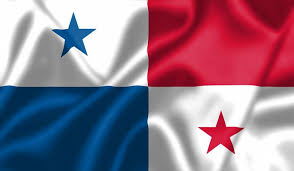An Asian company promises to install 300 cryptocurrency ATMs in Latin America. El Salvador leads the region with 205 teams available.
Panama could become one of the Latin American countries with the most bitcoin ATMs since, in the first quarter of 2022, at least 50 new equipment would get installed in its territory. Along with the deployment of all these devices, the nation would even surpass Colombia, which currently has more than 30 cryptocurrency machines.
The Santo Blockchain company, with roots in Vietnam and working in Panama through its subsidiary Santo Pay, highlighted in a statement that, in 2022, it would install at least 300 ATMs in Latin America; 50 of them will get distributed in the Panamanian region. Colombia and Costa Rica will become the regions that will benefit the most from the distribution of these teams.
El Salvador is the region with the most widespread network of ATMs that work with digital currencies, with 205 machines currently available in its entire territory. Colombia ranks as the second nation with at least 38 machines, while Puerto Rico ranks as the third country on the continent with the most installed ATMs.
According to data collected from Coin ATM Radar, this outlook may change over the next year if Santo Blockchain’s plan gets accomplished. The ATMs the firm would deploy in Latin America would meet their synchronization with Santo Crypto, a bitcoin portfolio in a development stage.
The company also expressed that the bitcoin ATMs will get shipped from Shenzhen, China, around the third week of February 2022. The company had to carry the equipment from Asia, discarding the possibility of acquiring them at the factory already operating in El Salvador.
It is not strange that the firm focuses its efforts on Panama and considers it as its gateway to the Latin American market since this territory is increasingly friendly with cryptocurrencies. In September, a draft bill to regulate bitcoin and other cryptocurrencies appeared on the scene. However, the country revealed its efforts to get off the grey list of the Financial Action Task Force (FATF), something that raises doubts about the regulation of cryptocurrencies.
Panama Continues in the Path to Regulate the Bitcoin Environment
Velasco’s statement expressed that his action to exit the grey list would not have changed until January in the Bitcoin and cryptocurrency ecosystem in Panama. The FATF evaluation will clarify if their policies to fight money laundering are correct or if they will have to make a control adjustment, which could have repercussions on the regulation of cryptocurrencies.
The FATF applied various parameters to regulate the bitcoin ecosystem recently. Two months ago, the entity launched a guide with some recommendations such as reducing peer-to-peer (P2P) transactions, viewing and controlling cryptocurrency operations, and censoring transfers to non-recommended accounts. Censoring transfers to non-recommended accounts is perhaps one of its most highlighted features.
By: Jenson Nuñez











